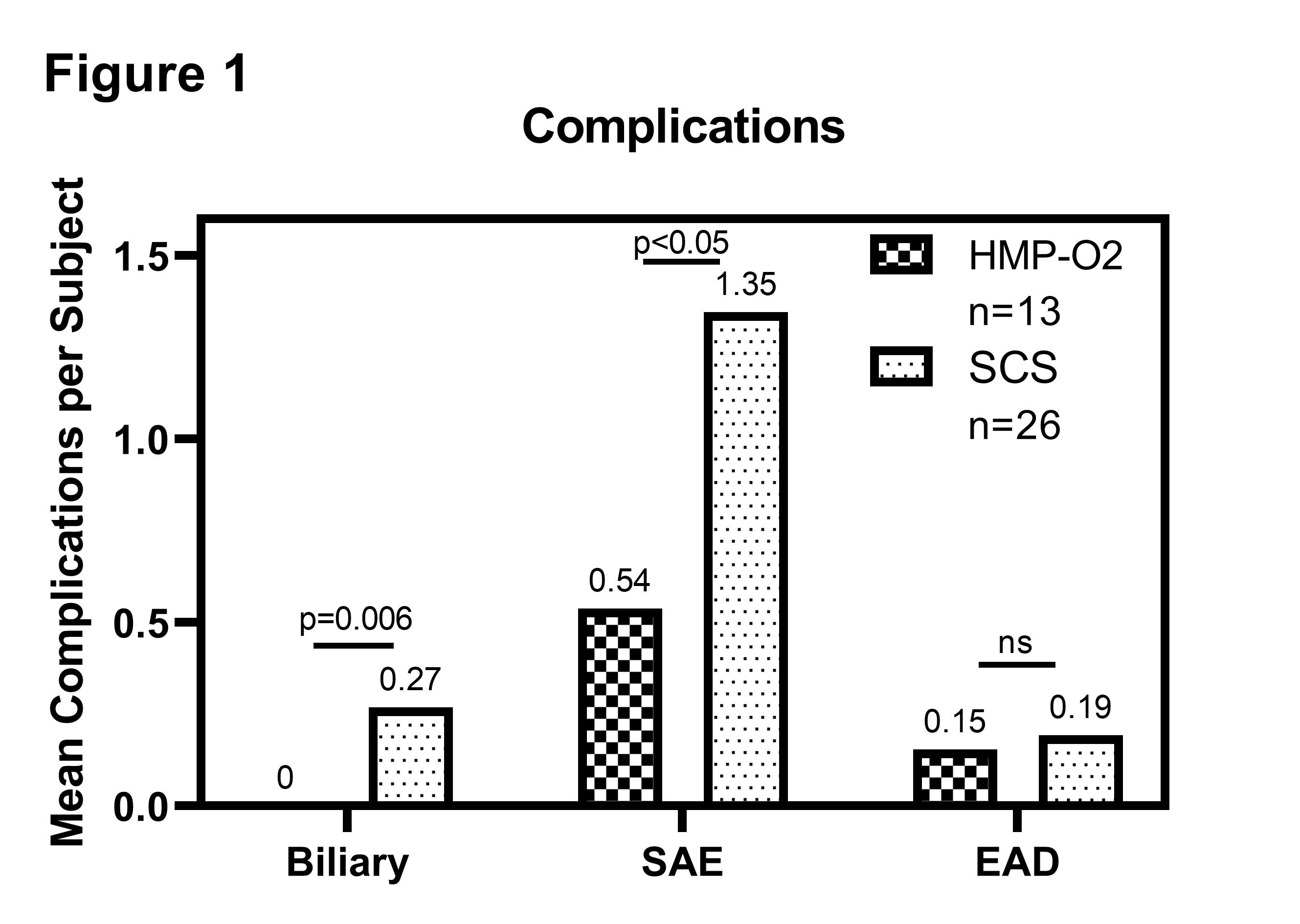Hypothermic Oxygenated Machine Perfusion vs Static Cold Storage: Preliminary Clinical Experience from a Prospective, Multi-Center Randomized Controlled Trial
1Transplant and HPB Surgery, Rutgers NJMS, Newark, NJ, 2Division of Transplantation, University of Cincinnati, Cincinnati, OH
Meeting: 2020 American Transplant Congress
Abstract number: 593
Keywords: Liver grafts, Machine preservation, Perfusion solutions, Preservation
Session Information
Session Name: All Organs: Organ Preservation/Ischemia Reperfusion Injury
Session Type: Oral Abstract Session
Date: Saturday, May 30, 2020
Session Time: 3:15pm-4:45pm
 Presentation Time: 4:03pm-4:15pm
Presentation Time: 4:03pm-4:15pm
Location: Virtual
*Purpose: Hypothermic oxygenated machine perfusion (HMP-O2) is a novel liver preservation technique currently in clinical trials. It has the potential to mitigate ischemia/reperfusion injury, as well as improve organ function and patient outcomes. Here we present preliminary results from two collaborating centers within the PILOT trial (NCT03484455), a prospective, multi-center randomized controlled trial comparing HMP-O2 vs Static Cold Storage (SCS), using the Lifeport Liver Transporter (LLT) (Organ Recovery Systems, Itasca, IL).
*Methods: Study patients were randomized to SCS or HMP-O2. The HMP perfusate was actively oxygenated using “oxygen pre-charge” (OPC) prior to initiation of perfusion. Liver tissue samples and perfusate were collected. Operative and postoperative care was per institutional protocol, and postoperative parameters were followed. Adverse events (AEs) were tracked; re-operations, hospital re-admissions, and biliary complications were considered severe (SAEs). Statistical analysis was performed using SPSS v26 and GraphPad Prism v8.3.0; p<0.05 was considered significant.
*Results: 26 SCS and 13 HMP-O2 cases were analyzed. Donor and recipient age, match MELD, BMI and anastomotic time were similar between groups. Cold ischemia time (CIT) was greater for HMP-O2 (7 vs 5.1 hrs, p=0.0001). One recipient of a DCD liver in the SCS cohort had PNF and expired on POD1. Early allograft dysfunction (EAD) occurred in 2/13 HMP-O2 and 5/26 SCS cases. The incidence of SAEs, particularly biliary complications (BC), was higher in the SCS arm (p<0.05 and p=0.006, respectively; Figure 1). This was independent of ischemia times and donor/recipient parameters.
*Conclusions: HMP-O2 appears to be a safe and effective preservation method. Early results from two centers in the PILOT trial demonstrate several improved short-term outcomes. Further study is needed to fully characterize the benefits of HMP-O2 in Liver Transplantation.
To cite this abstract in AMA style:
Panayotova GG, III RQuillin, Paterno F, Lunsford K, McCarty MA, Bailey A, Dikdan G, Rosado J, Shah S, Guarrera JV. Hypothermic Oxygenated Machine Perfusion vs Static Cold Storage: Preliminary Clinical Experience from a Prospective, Multi-Center Randomized Controlled Trial [abstract]. Am J Transplant. 2020; 20 (suppl 3). https://atcmeetingabstracts.com/abstract/hypothermic-oxygenated-machine-perfusion-vs-static-cold-storage-preliminary-clinical-experience-from-a-prospective-multi-center-randomized-controlled-trial/. Accessed December 18, 2025.« Back to 2020 American Transplant Congress

